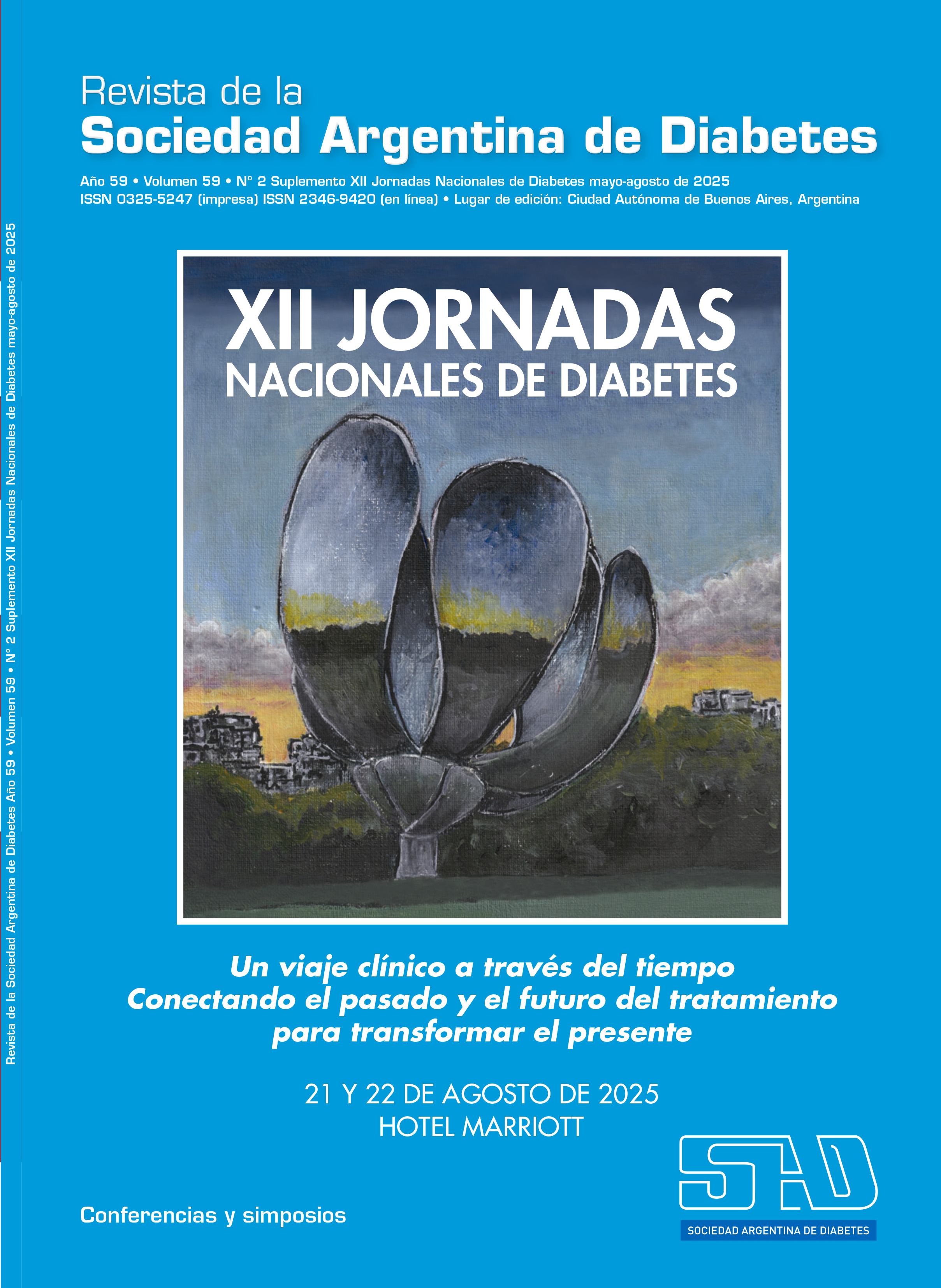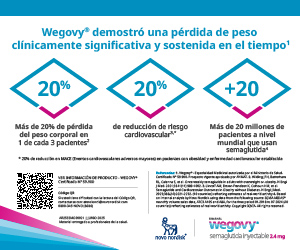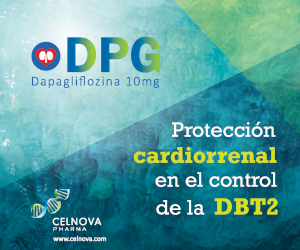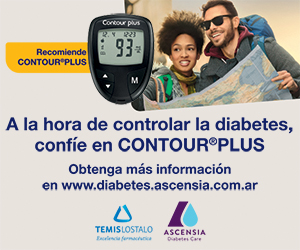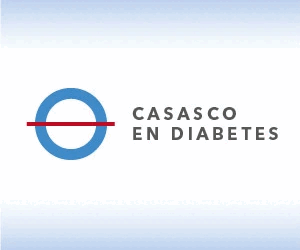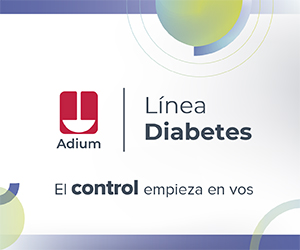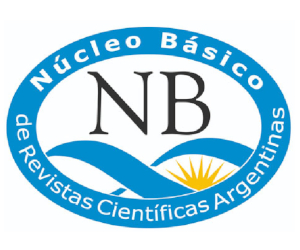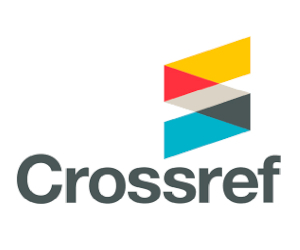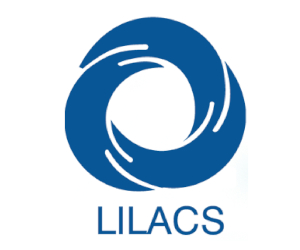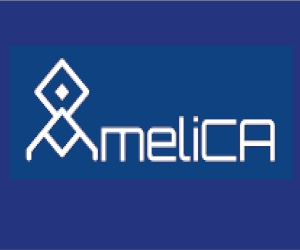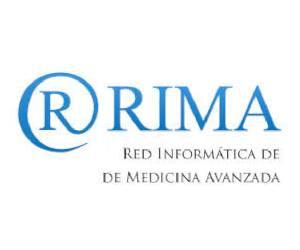Continuous glucose monitoring as an educational strategy
DOI:
https://doi.org/10.47196/diab.v59i2Sup.1253Keywords:
diabetes, continuous glucosa monitoringAbstract
Continuous glucose monitoring (CGM) has proven to be an effective educational strategy for both people with type 1 and type 2 diabetes, and even today there is evidence for supporting education on behavior change in prediabetes and people without diabetes. Several studies have shown that CGM not only helps control blood glucose but also facilitates real-time learning, allowing people to visualize how decisions affect blood glucose, learning the impact in real time. This promotes behavior change by strengthening self-regulation and commitment to treatment.
It is an interesting reinforcement of structured education because it encourages active learning, as patients interpret their own data, generating motivational feedback and a basis for communication with the physician through data analysis to identify patterns. It is a dynamic teaching tool. Several studies show benefits for HbA1c, self-confidence, and treatment adherence.
Alfadhli et al. (2016) conducted a study in women with gestational diabetes using real-time CGM and specifically defined it as an "educational tool." They concluded that CGM facilitates understanding of the relationship between eating patterns and blood glucose levels, improving control during pregnancy.
Rivera Ávila et al. (2021) evaluated CGM as an educational tool and supplement to standard care, finding a significant reduction in HbA1c in the group that used CGM with educational support compared to the control group (−0.61).
In Korea, a nutritional education program combined with flash glucose monitoring or capillary blood glucose monitoring was evaluated. Participants in the flash monitoring group had greater reductions in fasting glucose (−16.5 mg/dL; p=0.017), body weight (−1.5 kg; p=0.013), HbA1c (−0.50%; p<0.001), and a better self-management questionnaire score at postintervention. Martens et al. demonstrated that patients with T2DM who used CGM in conjunction with appropriate education achieved significant improvements in glycemic control. Similarly, Welsh et al. found that sustained use of CGM, coupled with ongoing education, resulted in significant and sustained improvements in glycemic control and a reduction in hypoglycemia in adults with T1DM.
Personalized education and ongoing support are essential to overcome barriers to technology adoption. Initial assessments allow educational programs to be tailored to individual needs, while ongoing support, through follow-up sessions and support groups, helps maintain motivation and adherence.
In short, CGM is a powerful educational tool, providing valuable information for self-monitoring and informed decision-making in diabetes management.
References
I. American Diabetes Association. Diabetes Technology: Standards of Care in Diabetes-2025. Diabetes Care 2025;48(Supp1):S146-S166.
II. Choe JH, et al. Effects of patient-driven lifestyle modification using intermittently scanned continuous glucose monitoring in patients with type 2 diabetes. Results from the randomized open-label PDF Study. Diabetes Care 2022;45(10):2224-2230.
III. Welsh JB, et al. Sustained beneficial effects of continuous glucose monitoring on A1C, glucose profiles, and hypoglycemia in adults with type 1 diabetes. Further analyses from the DIAMOND randomized clinical trial. Diabetes Care 2019;42(4):403-410.
IV. Martens T, et al. Effect of continuous glucose monitoring on glycemic control in patients with type 2 diabetes treated with basal insulin: the MOBILE randomized clinical trial. JAMA 2021;325(22):2262-2272.
Downloads
Published
Issue
Section
License
Copyright (c) 2025 on behalf of the authors. Reproduction rights: Argentine Society of Diabetes

This work is licensed under a Creative Commons Attribution-NonCommercial-NoDerivatives 4.0 International License.
Dirección Nacional de Derecho de Autor, Exp. N° 5.333.129. Instituto Nacional de la Propiedad Industrial, Marca «Revista de la Sociedad Argentina de Diabetes - Asociación Civil» N° de concesión 2.605.405 y N° de disposición 1.404/13.
La Revista de la SAD está licenciada bajo Licencia Creative Commons Atribución – No Comercial – Sin Obra Derivada 4.0 Internacional.
Por otra parte, la Revista SAD permite que los autores mantengan los derechos de autor sin restricciones.



